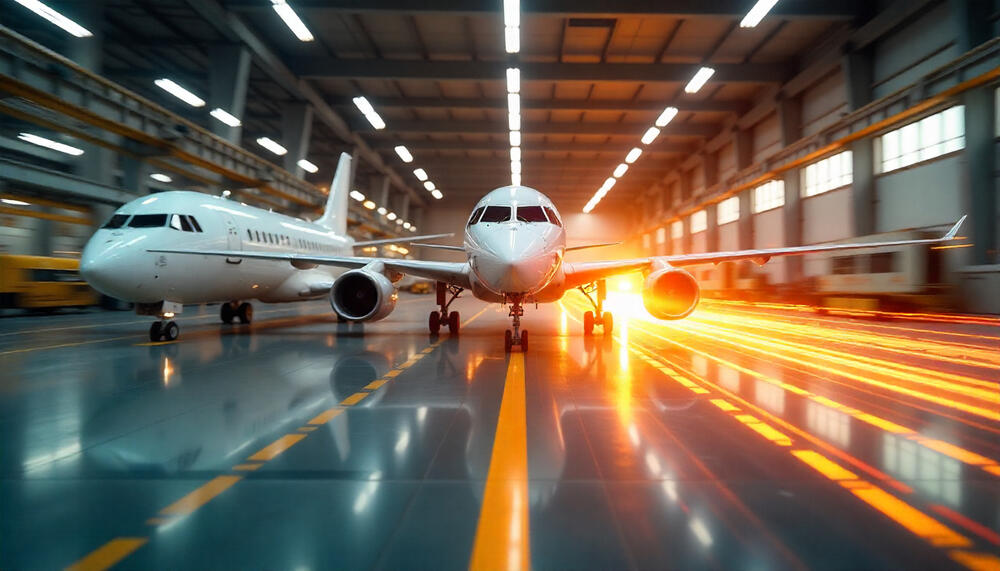Sunday, July 27, 2025
A time-honored even tome-proven aviation partnership between the United Arab Emirates and China gain new comprehensive momentum grounded on ingenuity, manufacturing excellence and a set of strategic regulatory convergence. This action opens the door for a future where both of our nations lead the world in the most advanced aerospace innovations, and pave the way for broader and far-reaching collaboration in cutting-edge aerospace technologies.
The United Arab Emirates (UAE) is strengthening its civil aviation ties with China through an important delegation visit aimed at expanding both technical and commercial cooperation in the aviation sector. The UAE delegation, led by the Director General of the General Civil Aviation Authority (GCAA), included senior figures from organizations such as the Abu Dhabi Investment Office, EDGE Group, This visit was an important step in solidifying the UAE’s aviation partnerships with China and exploring new areas for collaboration and growth.
Enhancing the UAE-China Aviation Partnership
The purpose of the visit was to deepen the already growing aviation relationship between the UAE and China, focusing on key areas like aerospace manufacturing, air traffic management, and air navigation technologies. The UAE delegation’s goal was to align its aviation vision with China’s technological advances, facilitating closer cooperation and identifying joint opportunities that will benefit both countries.
This partnership is pivotal as both nations strive to lead in the global aerospace industry. The UAE, which has established itself as a leading aviation hub in the Middle East, aims to collaborate with China, a rising aerospace power, to foster innovation and drive global aviation forward.
Exploring Opportunities with China’s Leading Aerospace Manufacturers
During the visit, the UAE delegation toured China’s major aerospace manufacturers to examine their innovations in aviation production. The group visited Commercial Aircraft Corporation of China (COMAC), the company behind China’s first domestically produced commercial aircraft, the C919; TCab Tech, a developer of vertical takeoff and landing (VTOL) aircraft; AutoFlight, a leader in autonomous flying technology; and CETC LES, which specializes in avionics and electronic systems for aviation.
The visit provided valuable insights into China’s manufacturing capabilities and future plans for the aerospace sector. Discussions focused on fostering technological exchanges, exploring potential collaborative projects, and identifying areas where the UAE could join forces with Chinese companies in developing sustainable aviation solutions and autonomous flight technologies.
The delegation also sought opportunities for joint research and development, particularly in emerging sectors such as air mobility and next-generation aircraft. These initiatives are crucial for both countries as they aim to stay ahead of industry trends and integrate the latest advancements in aviation technologies.
High-Level Discussions with Chinese Aviation Authorities
. These high-level talks focused on streamlining regulations, aligning certification processes, and improving air traffic services to support smoother operations between the two countries.
Discussions also revolved around areas like aircraft maintenance, which is essential for ensuring operational safety and efficiency. The UAE delegation explored the possibility of closer cooperation with China’s aviation regulators to improve air navigation services and develop institutional frameworks that promote best practices in aviation safety and air traffic management.
This cooperation is particularly important as both nations expand their aviation industries and seek to integrate more advanced technologies into their operations. By aligning regulatory systems, both the UAE and China are paving the way for more efficient and safer air traffic operations across their respective airspaces.
Long-Term Prospects for UAE-China Aviation Cooperation
The growing collaboration between the UAE and China in the civil aviation sector holds significant long-term potential. With both countries focused on technological advancements in aerospace, this partnership is expected to generate numerous opportunities in areas such as sustainable aviation, autonomous aircraft, and air mobility. The visit served as a critical milestone in enhancing both commercial and technical ties, positioning the UAE and China as key global players in the aviation industry.
For the UAE, this partnership with China provides access to the latest aerospace innovations and offers new opportunities for collaborative projects that will drive its aviation ambitions. Both countries are poised to benefit from this partnership by integrating next-generation technologies and developing stronger infrastructure that supports future growth in aviation.
Conclusion
The UAE’s visit to China marks a significant step in advancing bilateral cooperation in the civil aviation sector. By focusing on regulatory alignment, technological advancements, and manufacturing collaborations, both nations are well-positioned to take their aviation industries to the next level. This visit highlights the UAE’s commitment to strengthening its global aviation position and fostering partnerships that drive innovation and create long-term growth opportunities in the industry.



